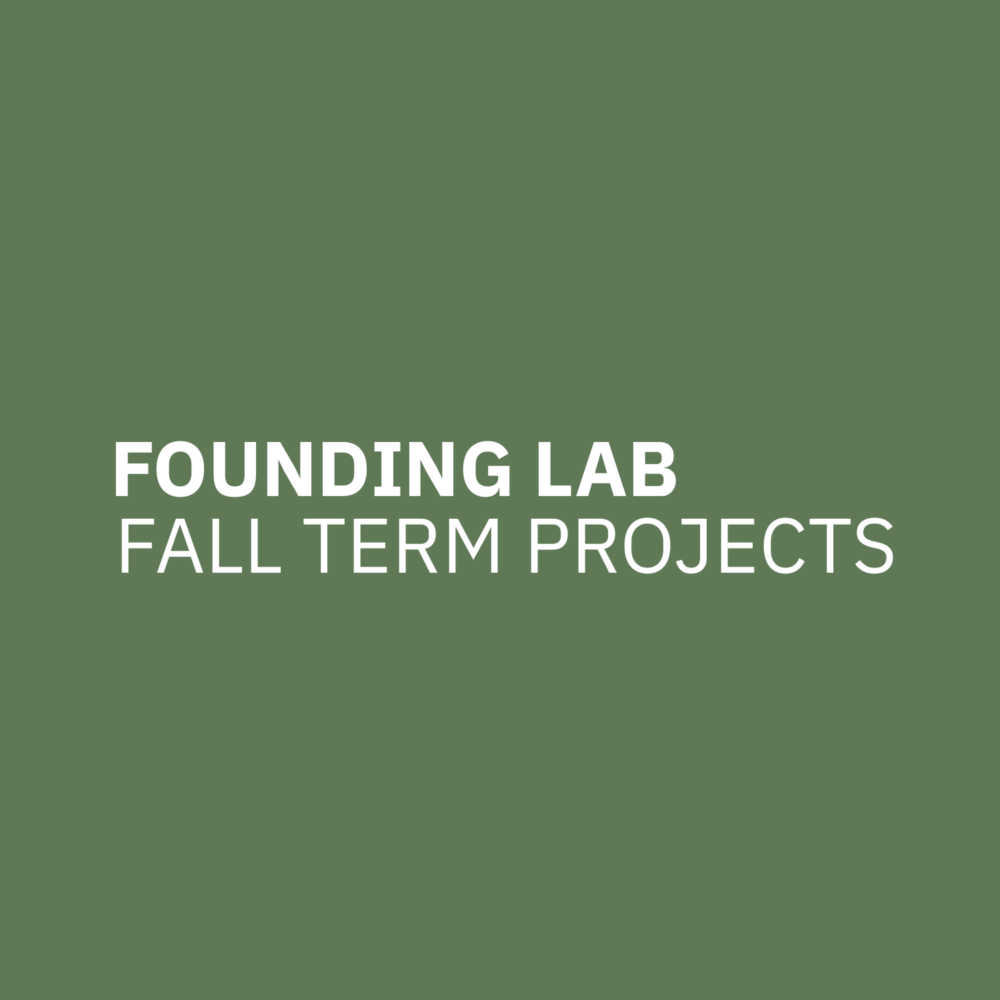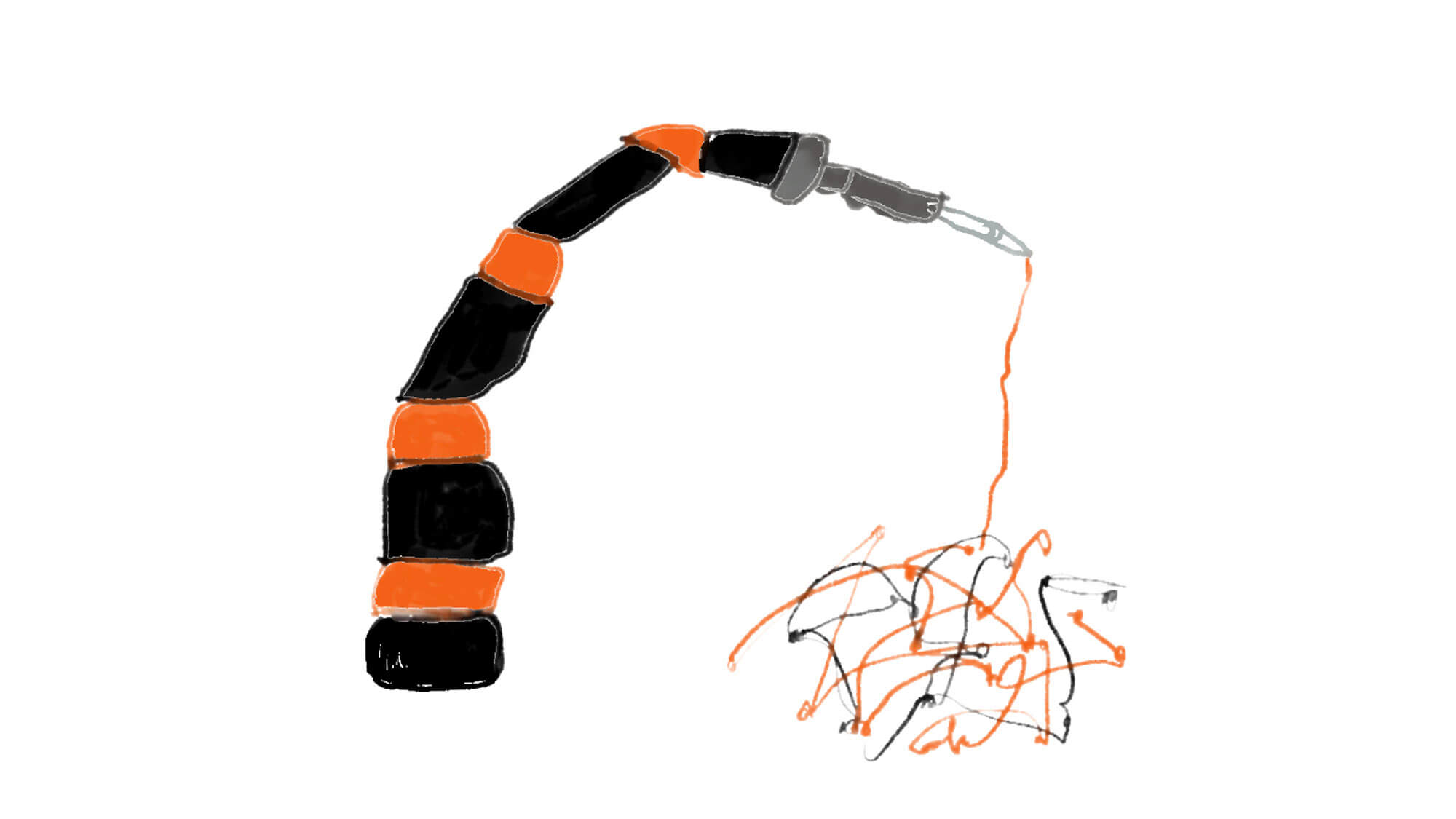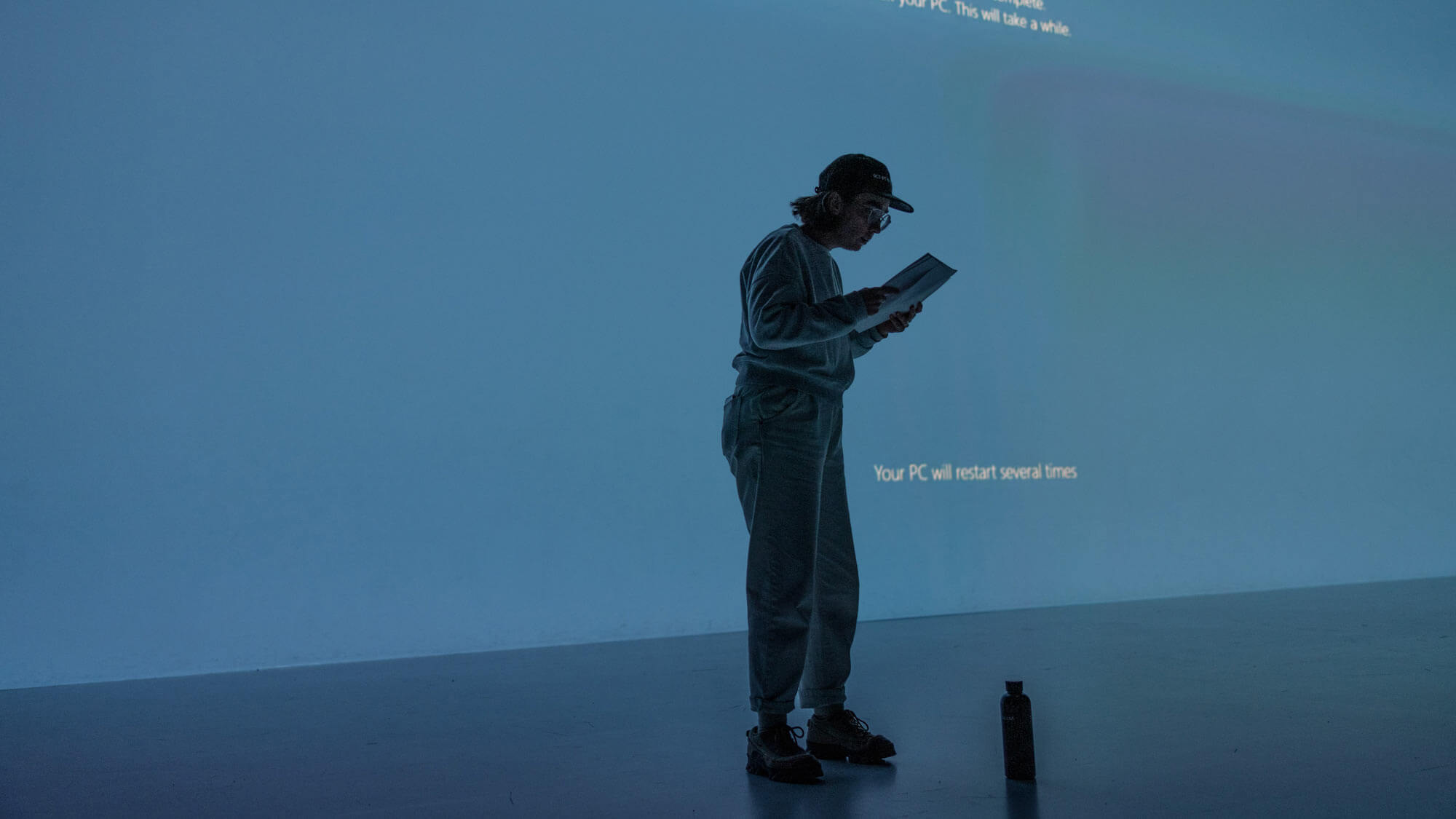

Glitching Optimization
in a Few Steps:
a performance-lecture about robotic failures
by
Julie-Michèle Morin
In collaboration with Letta Shtohryn, Daniela Brill Estrada, Lea Luka Sikau, Bart Kuipers
Hacking Techno-Capitalism through failures and glitches.
Historically, robotics has relied on familiarity to optimize interactions between humans and robots (Mori 1970, Turing 1955). However, what appears familiar, and therefore implicitly normal, remains highly subjective and biased (Rhee 2018). Once human values and perspectives are encrypted in software and hardware, technologies massively adopt dominant views and normative behaviors (sexism, racism, ableism, etc.) (O’Neil 2016, Wachter-Boettcher 2017, Noble 2018, Benjamin 2019 Atanasoski & Kalindi 2019, Crawford 2021). As a Ph.D. student in intermedia theatre and dramaturg investigating robotics and performing arts from a queer, decolonial and anti-capitalist perspectives, I believe the stage is a rich site of experimentation to diversify robotic imaginaries.
The performance Glitching Optimization in a Few Steps: a performance-lecture about robotic failures, is a video and performance-based artwork that dives into the realm of robotic labor. Featuring a diverse array of robots attempting and failing to complete assigned tasks, the performance brings into question how the concept of robotic optimization contributes to maintain neoliberal perceptions of performance, while reinforcing a limited understanding of both humanness and machineness.
The project adopts the format of a lecture-performance, where I blended theoretical reflections on robotics standards with intimate stories about different types of failures encountered in my own queer academic trajectory. During my performative experimentation with the robots, I designed different dramaturgical tasks for them to fail softly: the Roborock S8 (a robotic vacuum) tried to clean a mess in a useless and challenging maze. The Igus Rebel Cobot (a robotic arm without claws or grasping device) attempted to draw with a 3D pen and compete in a rock, paper, scissors game with myself. The Thymios (three tiny wheeled robotic devices used for educational purpose) did everything they could to stay on a table without any sense of orientation. And Spot (a robotic dog), gave its 100% to stabilize itself while navigating slippery surfaces. Structured by a textual narration performed by myself, the performance unfolds in three distinct chapters: “Dealing with your own mess,” “Trying to Grasp the World as It Is,” and “Looking for balance: becoming slippery”. It materializes itself as a series of filmed and live performances with those robotic agents.
Drawing on queer theories and the way they envision failures as a form of activism against the hegemonies (Halberstam, 2011), and on my own experiences as a queer person who failed so many times to respond adequately to the so-called norms, the project tackles the myth of familiarity, normality, and optimization in the robotic field. By hacking with care the role and purpose of these robots, I hope to visible marginal visions of robotic imaginaries and in doing so, materializing ways of protesting against the objectives and methods of techno-capitalism.
This project is therefore an opportunity to re-imagine our entanglements with robots outside of our desires for optimization. My performance aims to escape techno-capitalist assignations, and temporarily break away from the productive destiny reserved for the robots. As such, I wish to add a socio-affective and political depth to the debates around the robotization of work and put forward critical perspectives on the technological alienation of labor that this technical revolution underpins.
Collaborating with humans and other-than-humans agents: interdisciplinarity leads to weird drama
This research-lead performative work is interdisciplinary in its approach as it combines insights from critical science studies, new materialism philosophy, queer theories, and robotics. The project engages with critical science studies by bringing into question the historical patterns of optimization at the core of the robotic field. New materialism’s perspectives are enmeshed in the conceptual fabric of this work, as they constituted a way to better understand the agency and behaviors of robotic devices outside normative and traditional conceptions of living and non-living matter. Queer theories and their perspective on failure as a gesture of resistance were central in my attempt to broaden our robotic imaginaries outside the trope of performance and optimization.
The use of a lecture-performance format combines theoretical reflections with intimate storytelling to explore hybrid ways of mobilizing intellectual resources such as articles, conferences, and academic knowledge. Merging multiple disciplines such as poetic writing, live theater, academic codes, and video-based performance, the project goes beyond academic or artistic inquiry to engage in interdisciplinary hacktivism.
Gaining access to specialized equipment that might not be readily available to individual artists was also impactful on the development of my project. Indeed, having the possibility to borrow Spot from the Institute of Business Informatics / Communications Engineering (JKU) and the IGUS Rebel Cobot from Creative Robotics in Linz allowed me to engage with a broader spectrum of robotic possibilities.
During the Fall semester, we visited the MARK factory, where I had the opportunity to observe and engage with robots in a manufacturing setting, likely provided valuable insights and inspiration that significantly contributed to my project. The physical presence, sounds, and movements inspired the aesthetic choices in my performance and allowed me to capture visual and sonic material onsite for the artwork.
Letta Shtohryn oversaw the video and sound editing aspect of the performative work and brought her expertise in visual storytelling to the project, enabling me to craft a compelling narrative through the arrangement of visual, sonic, and textual elements. Her perspectives and feedback enhanced the overall pace and consistency of my performance-lecture, making it more engaging and impactful for the audience. I also acquired technical skills as Daniela Brill Estrada (artist and researcher at the Institute of Business Informatics / Communications Engineering) taught me how to control the robotic dog from Boston Dynamics, Spot. This hands-on experience enhanced my technical proficiency in working with robotic technologies, providing me with insights into the practical aspects of interacting with and managing a sophisticated robotic system. Observing how it navigates different environments, responds to commands, and handles challenges has contributed to my insight into the intricacies of robotic behaviors.
Overall, this interdisciplinary approach to performative work allowed me to acknowledge the agency and viewpoints of both human and other-than-human entities, creating a more inclusive and nuanced exploration of the themes within my performance-lecture. It provides an opportunity to uncover and address biases in design, usage, and societal perceptions, contributing to a critical examination of the impact of technology on various aspects of human and robotic standards toward optimization and failure. These encounters were the joyful foundations of some weird drama.
References
Atanasoski, Neda & Kalindi, Vora (2019). Surrogate Humanity: Race, Robots, and the Politics of Technological Futures, Durham, Duke University Press.
Benjamin, Rhua (2019). Race After Technology, Oxford, New York & Boston, Polity Press.
Crawford, Kate (2021). Atlas of AI: Power, Politics, and the Planetary Costs of Artificial Intelligence, New Haven, Yale University Press.
Halberstam, Jack (2011). The Queer Art of Failure, Durham, Duke University Press.
Mori, Masahiro (1970). « The Uncanny Valley Phenomenon », Energy, vol. 7, no 4, Esso Standard Oil, 1970, p. 33-35, https://web.ics.purdue.edu/~drkelly/MoriTheUncannyValley1970
Noble Umoja, Safiya (2018). Algorithms of Oppression: how Search Engines Reinforce Racism, New York, NYU Press.
O’Neil, Cathy (2016). Weapons of Math Destruction: How Big Data Increases Inequalities and Threaten Democracy, New York, Crown.
Rhee, Jennifer (2018). The Robotic Imaginary: The Human and the Price of Dehumanized Labor, Minnesota, University of Minnesota Press.
Turing, Alan (1950). « Computing Machinery and Intelligence », Mind, New Series, vol. 59, n° 236, p. 433-460, https://www.jstor.org/stable/2251299
Wachter-Boettcher, Sarah (2017). Technically Wrong: Sexist Apps, Biased Algorithms, and Other Threats of Toxic Tech, New York, W.W. Norton & Company.




